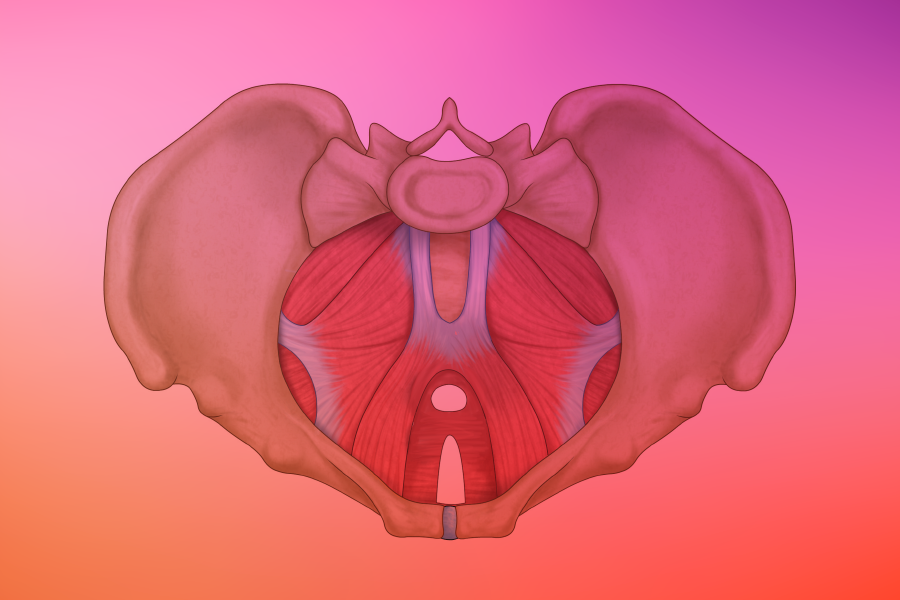With its focus on fluid movements and controlled breathing, Pilates has a strong reputation for boosting muscle tone, sparking a mind-body connection and helping achieve a graceful physique. But Roper St. Francis Healthcare urogynecologist Dr. Bernard Taylor praises the practice for a much more targeted benefit.
“Pilates concentrates on building core muscle strength and functional coordination, which makes it an excellent regimen for strengthening the pelvic floor,” explains the doctor, whose expertise bridges gynecology and urology. “The pelvic floor muscles are deep to our core and most prone to the stresses of gravity, so any exercise that stabilizes the body’s core muscle tone, stamina and strength improves function.”
The pelvic floor
A generic term for the muscles that support the pelvic organs and stabilize the pelvic bones, the pelvic floor muscles span from the front pubic bone to the tailbone like a hammock, always working to keep the vagina, rectum and bladder in position as well as maintain bladder and bowel control.
Unfortunately, nearly half of adult women suffer from some sort of pelvic floor dysfunction, though Dr. Taylor believes the number may be higher than reported, given the stigma surrounding these seemingly private problems. Whether from giving birth, surgery or natural aging, pelvic floor disorders are more common than cancers, Dr. Taylor says.
Fire up your powerhouse
Joseph Pilates, the fitness program’s creator, used the term powerhouse to describe the core body, referring not just to the abdominal muscles, but also to those in the back, hips, glutes and – you guessed it- pelvis. To fire up your powerhouse, Pilates links breath and movement, directing participants to inhale into their back and sides rather than their belly (as they might in yoga).
“When you take a deep breath, the abdominal muscles stretch, the diaphragm contracts pulling air into the lungs, the abdomen expands and the pelvic floor muscles lengthen in a coordinated effort,” explains Dr. Taylor.
To properly activate your pelvic floor, lift and squeeze those muscles as if you were trying to hold back a tinkle or a toot. “These subtle movements actively engage the muscles and build strength,” he says. Controlled breathing also boosts circulation and oxygen for maximum benefit to the muscles and connective tissues.
Pilates for all
By promoting a positive overall lifestyle, Pilates may even win out over physical therapy when it comes to minimizing incontinence, report some studies. “Pilates uses low-impact body-weight exercises that almost anyone can do, regardless of age or activity level,” says Dr. Taylor, who champions a holistic approach to healthcare.
“Pilates isn’t just focused on core and pelvic floor activation, but also whole-body wellness through functional movement, healthy choices including diet and a group culture that values physical and mental wellness,” explains Dr. Taylor. “Women who take a proactive approach to wellness achieve greater long-term results.” Roper St. Francis Healthcare urogynecologist Dr. Bernard Taylor focuses on the diagnosis and treatment of pelvic floor conditions that impact the function of the bladder and bowels as well as support of the organs in the pelvis. Learn more pelvic floor disorders and treatment options.

